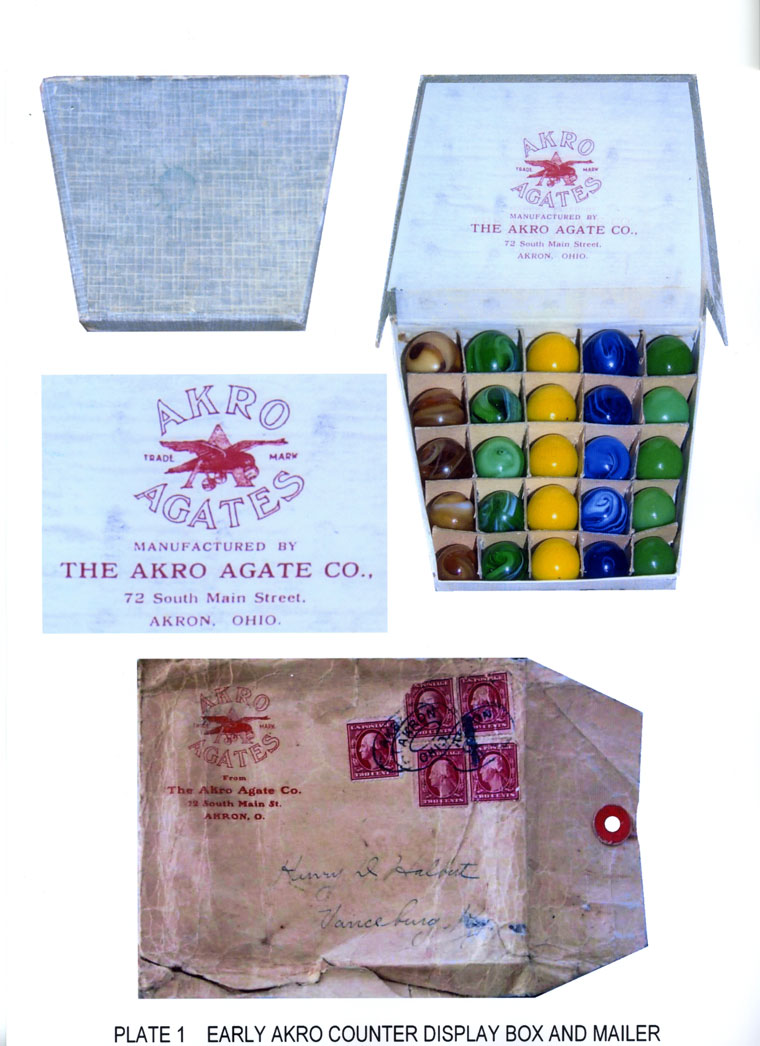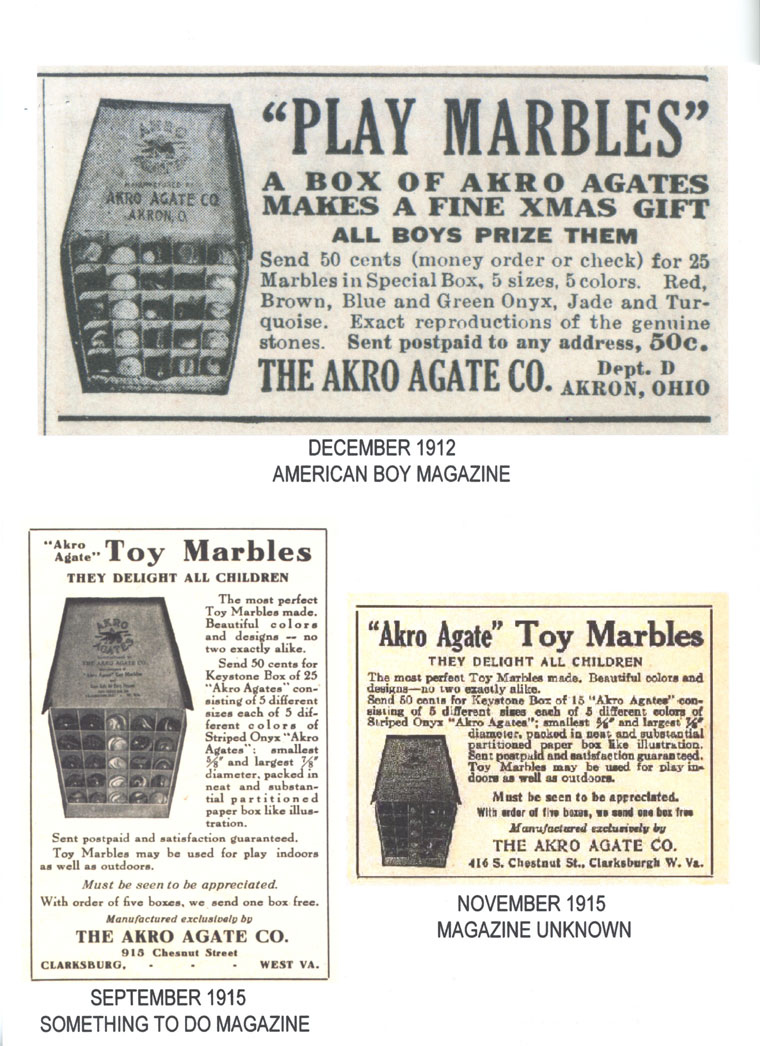

AKRO’S EARLIEST BOX
By George Sourlis
Plate 1 shows what is currently thought to be Akro’s earliest box.
As you look down on the cover of the closed box you can see that it is
shaped like a keystone at the top center of a Roman arch.
There are no alpha-numerics or logos on the outside at all. The tow
parallel sides of the cover are its front (3-1/2 inches) and its back (5
inches). They are about 4 inches
apart. The cover is attached to the
bottom along the longer backside and can be lifted up and rotated back to expose
the contents. It has a downhill
slope from back to front. The
backside is about 7/8 inches high while the front side is about 5/8 inches high.
This is a counter display box used to sell marbles from store display
cases or counters when marbles were sold by the “onesies”.
As might be guessed from the geometry, the marbles inside have a variety
of sizes.
Opening the cover exposes not only the 25 marbles inside, but also the
manufacturer’s identity. The Akro
Agate Company name, address, and logo are printed on the inside of the cover.
Note the address:
The magazine ads from 1912 and 1915 in Plate 2 show a range of years
during which the box was available.
It may be that the box was available in 1911 and after 1915; I’m researching
that now. Notice that the two 1915
ads have Akro’s
In addition to the dates, the ads hold other useful information about the
boxes. All three ads specify that
the boxes hold 25 marbles in 5 different sizes, 5/8 inch through 7/8 inch (#0,
#1, #2, #3, and #4). Both the 1912
and the two 19145 ads state that the marbles have 5 colors.
For each color there were 5 different sizes.
In the 1915 ads the colors are not given.
However, the 1912 ad states the colors as red, brown, blue and green onyx
and jade and turquoise. So the jade
and turquoise (game) marbles were found in the earlier boxes.
Here is a second indicator of the date for the box shown in Plate 1.
This box shows jade and yellow (game) marbles.
So this box is the earlier version circa 1912.
All of the ads give the mail-order price – 50 cents.
The 1915 ads even offered an extra box free with any order of 5 boxes.
The type of marble in both 1915 ads is specified as “striped onyx”
(slags), but no type is given in the 1912 ad.
Something that is not stated in the ads is that the marbles were not made
by Akro, but by M.F. Christensen & Son.
While in
For years collectors did not believe that Christensen made red onyx
marbles. But the 1912 ad shows that
they did. Reds are very difficult to
find. One reason may be that the
coloring agent used to make red glass was more expensive than other coloring
agents; it contained gold. Perhaps
not many were made. For some reason
the yellow (game) marbles in this box are also quite rare.
So the ad and this example of the box show two rare colors that were
used, and the box shows that the packing was not always exactly as advertised.
Another indicator of the date of this particular box is shown in Plate 1.
It’s the Akro mailer for the box.
The postmark is not dated, but the stamps can be dated.
(I was a stamp collector in the past.)
In the post office stamp catalogs it is shown that these two-cent stamps
were last printed in 1911.
I want to thank Hansel deSousa for the box and mailer pictures used here.
This unusual Akro counter display box is his.

PLATE 1 EARLY AKRO COUNTER DISPLAY BOX
AND MAILER

PLATE 2 ADS FOR THIS AKRO COUNTER DISPLAY
BOX